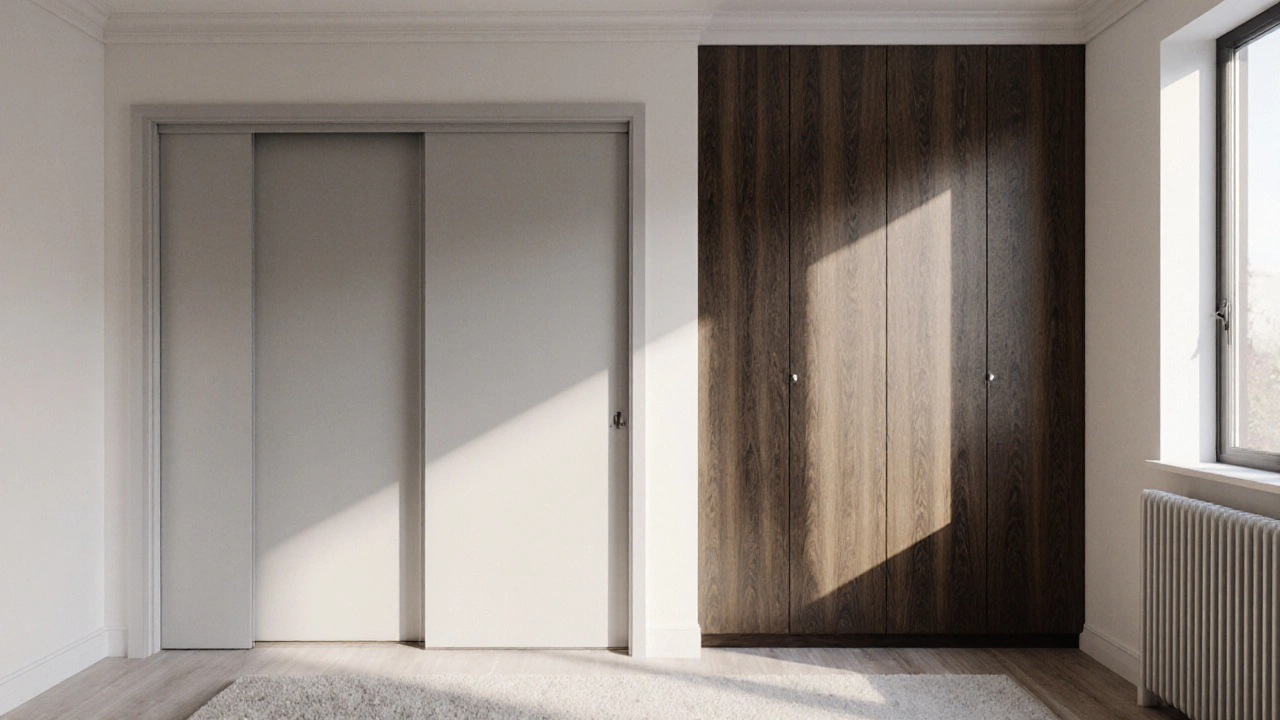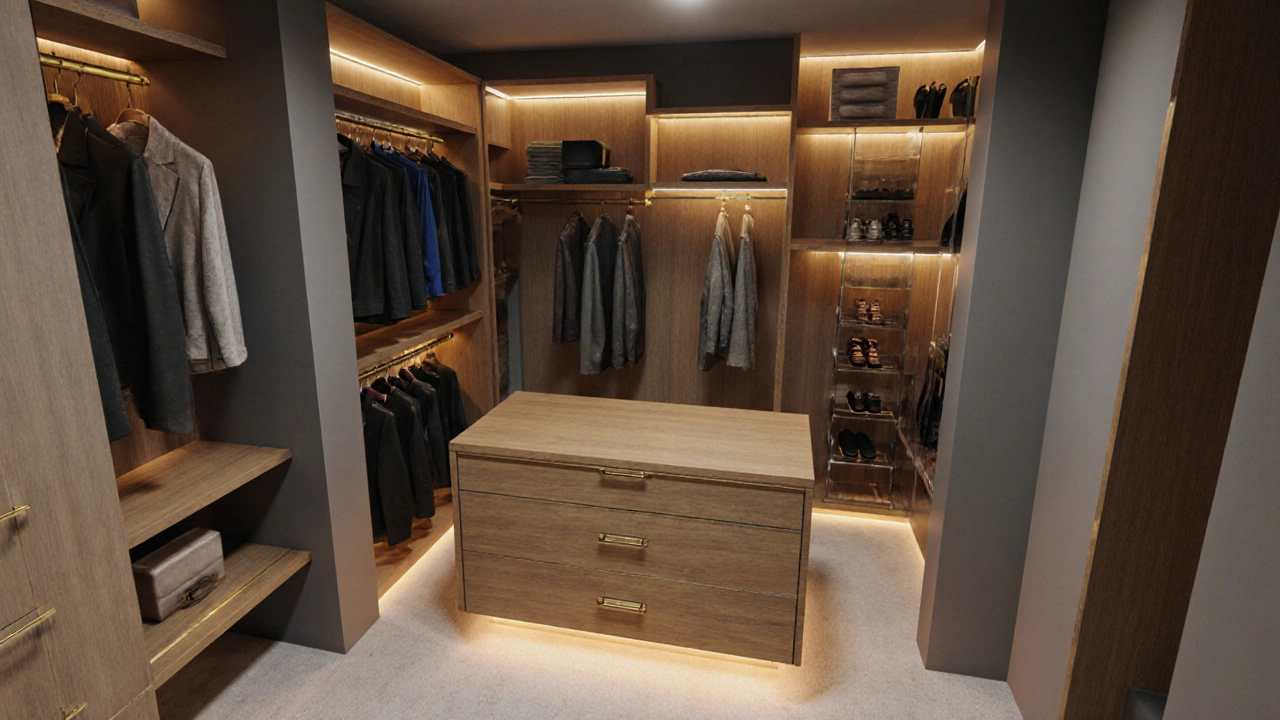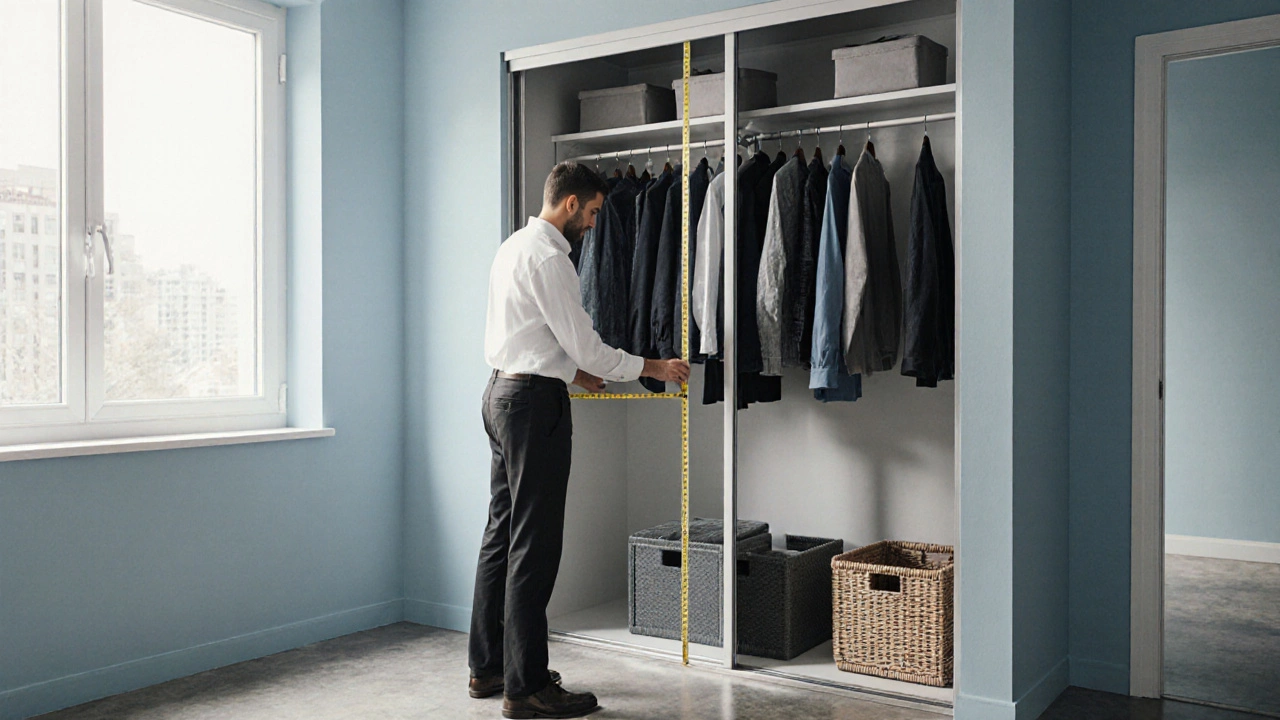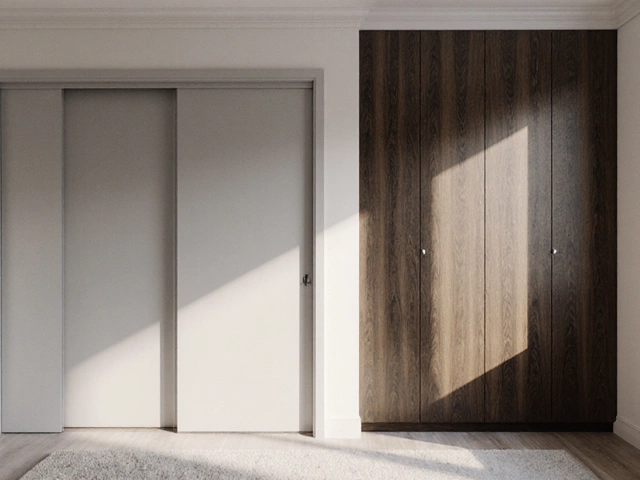Closet vs Wardrobe: What’s the Real Difference?

Closet vs Wardrobe Decision Calculator
Find Your Perfect Storage Solution
Answer 3 quick questions to determine if you need a closet or wardrobe.
Your Recommendation
When you think about storing clothes, a closet is a built‑in or walk‑in space usually integrated into the architecture of a home. A wardrobe is a freestanding piece of furniture that houses your hanging and folded items. This subtle shift in definition explains why the two terms get tossed around interchangeably, even though they serve different needs, styles, and budgets. Below is a practical, no‑fluff guide that helps you decide which works best for your space.
Key Takeaways
- Closets are built‑in, usually part of the room’s structure; wardrobes are movable furniture.
- Walk‑in closets need more floor space but allow custom shelving, lighting, and zones.
- Freestanding wardrobes are ideal for renters or rooms without wall space for a built‑in.
- Cost varies widely: a simple wardrobe can be under $200, while a custom walk‑in can exceed $5,000.
- Choose based on your floor plan, lifestyle, and whether you plan to stay long‑term in the home.
Defining the Closet
A closet is essentially a recessed storage cavity that may be shallow (reach‑in) or expansive (walk‑in). The key attributes include:
- Location: Usually located along a bedroom wall, behind a door, or under the eaves.
- Construction: Often framed with studs, finished with drywall, and fitted with a door system (hinged, sliding, or bi‑fold).
- Customization: Shelves, hanging rods, pull‑out drawers, shoe racks, and lighting can all be added.
Popular closet types:
- Reach‑in closet - a narrow space accessed by a single door.
- Walk‑in closet - a dedicated room, typically 4×5 ft or larger.
- Custom closet system - modular units (like IKEA Pax) designed for specific dimensions.
Defining the Wardrobe
A wardrobe is a standalone furniture item. It can be as simple as a wooden armoire or as sleek as a modern metal‑frame piece. Main features include:
- Mobility: You can move it from room to room or take it with you when you move.
- Design options: Sliding doors, hinged doors, open‑front, mirrored fronts, and even combination wardrobe‑desk units.
- Material range: Solid wood, engineered board, metal, or upholstered panels.
Typical wardrobe styles:
- Freestanding wardrobe - a single piece, often with double doors.
- Armoire - a tall, decorative wardrobe with higher ceilings.
- Modular wardrobe system - components that can be stacked or re‑configured.

Side‑by‑Side Comparison
| Aspect | Closet | Wardrobe |
|---|---|---|
| Installation | Built into wall or floor; requires carpentry | Plug‑and‑play; no construction needed |
| Space Requirement | Consumes wall space; walk‑in needs floor area | Footprint limited to furniture dimensions |
| Customization | High - shelves, drawers, lighting, islands | Low - usually fixed interior layout |
| Cost Range | $300 - $10,000+ (depending on finish and size) | $150 - $3,000 (standard models) |
| Mobility | Permanent; moving requires demolition | Portable; can be re‑arranged or taken when moving |
| Design Flexibility | Matches room architecture; can blend with wall color | Varies by style; can be a statement piece |
Choosing the Right Option for Your Home
Start by answering three practical questions:
- Do you own the house or rent? If you’re renting, a wardrobe gives you the freedom to move.
- How much floor space do you have? Small apartments benefit from a reach‑in closet or a slim wardrobe.
- Do you need custom organization (shoe racks, jewelry trays, lighting)? Walk‑in closets excel here.
Here’s a quick decision matrix:
- Renter + limited space: Choose a freestanding wardrobe with sliding doors to save on clearance.
- Owner + medium‑size bedroom: Install a reach‑in closet and consider a modular shelving kit.
- Luxury master suite: Go for a walk‑in closet with dedicated zones (hanging, folding, accessories).

Common Pitfalls & Pro Tips
- Pitfall: Assuming a wardrobe can replace a closet in a cramped room. Tip: Measure door swing and clearance before buying.
- Pitfall: Over‑loading a reach‑in closet with floor‑standing items. Tip: Add a low shelf or storage box to keep the floor clear.
- Pitfall: Ignoring ventilation. Tip: Install vent grilles or leave a gap in a walk‑in to avoid musty smells.
- Pitfall: Picking the cheapest wardrobe and ending up with flimsy doors. Tip: Look for solid‑core panels or metal hinges for durability.
Mini FAQ
Can I convert a wardrobe into a closet?
Yes, but it requires framing the wall, adding a door, and possibly reinforcing the floor. It’s usually cheaper to install a built‑in closet if you’re already renovating.
What’s the best material for a wardrobe that lasts?
Solid wood or high‑density engineered board with metal hardware offers the best balance of strength and aesthetics. Avoid particle board for heavy loads.
Do walk‑in closets add value to a home?
Absolutely. Real‑estate data from 2023‑2024 shows homes with walk‑in closets sell for 4‑7% more on average, especially in upscale markets.
How much clearance do sliding doors need?
At least 2‑3 inches on each side to allow the track and rollers to operate smoothly. Measure the wall depth as well; a recessed pocket of 3‑4 inches is ideal.
Is it worth buying a modular system like IKEA Pax for a small bedroom?
Yes. Pax units are customizable, relatively inexpensive (starting around $120), and can be re‑configured if you move or remodel later.
Whether you end up with a built‑in closet or a stylish wardrobe, the goal is the same: keep your clothes organized, protect them from damage, and make your bedroom feel tidy. Understanding the core differences helps you make a choice that fits your budget, your living situation, and your design taste.
